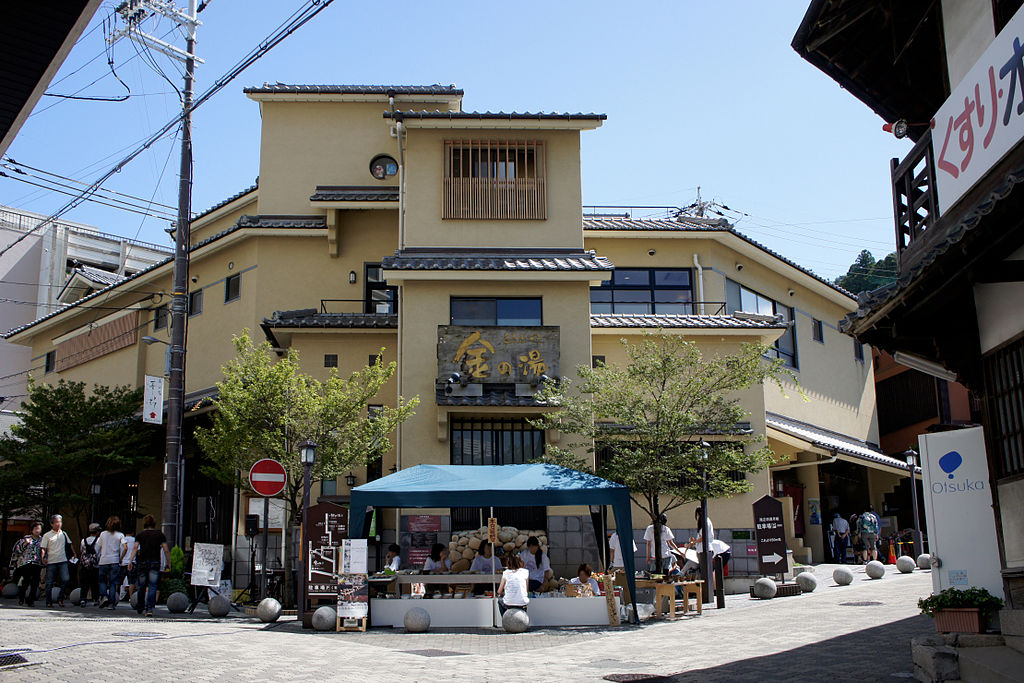Feb 25, 2019
Arima Onsen: Come On In, the Water’s Fine

The mapmakers say Arima Onsen is a part of Kobe but it is way on the other side of Mount Rokko and is thus a world unto itself. And people have been making their way to this unique world for almost 1400 years, drawn to the magical powers of its storied hot springs. Built along winding mountainside streets, Arima is the oldest onsen (hot spring) town in Japan.
The documented records say that Emperor Jomei took the waters in 631 and Arima was soon anointed as the emperor’s royal onsen. The earth pumps out two varieties of piping hot water in this region of Kansai – one known as the Gold Spring (Kinsen) is colored reddish brown due to its richness in iron and salt. The other is the Silver Spring (Ginsen) which is colorless and enlivened by a dash of radioactivity. Together they combine to emit seven of the nine natural components considered vital for onsen curative effects – one of the richest springs in the world.
For today’s visitors, the Kinsen is a favorite among women who value it as a way to keep their skin moisturized and to “keep the old bones warm.” There are actually two types of Ginsen springs at Arima and they are considered useful in stimulating cell activation, building up the immune system and fighting off muscle fatigue. When swallowed, the Ginsen can work wonders with one’s digestive system and breathing its vapors can ward off bronchial infections.
Onsens like Arima are virtually unknown on the planet. Unlike its Japanese cousins, the hot springs are not located near volcanoes. The unique geology produces a wide variety of hot waters from mild to 98 degrees Celsius – a smidge beneath the boiling point. These waters were from an ancient sea and make their way from 60 km below ground.
The town around the springs
Some thirty hotels are peppered in the hillocks around Arima to cater to onsen holidays. These include large spas like the ryokan Taketoritei Maruyama and the Arima Grand Hotel. Outside the hotels, many of which were constructed western-style after the opening of the Kobe port 150 years ago, and private baths are two public bath houses, Kin no Yu and Gin no Yu. You can drink spring water from traditional gourds or indulge in a free foot bath if you do not want the full experience of taking the waters (between 500 and 700 yen usually). Nature trails also traipse past Buddhist temples and to some of the original seven Arima springs.
The Yumotozaka shopping street boasts traditional Edo-style wooden structures (when the historic spa town was at its most bustling) that house local businesses such as the Arima Kago that creates handcrafted bamboo delights and has been doing so since the 15th century. Trying a carbonated rice cracker known at Tansansenbei – baked with only local spring water, thank you – is a must. The waters also yield other types of meals. Within walking distance of the downtown area is the Arima Rainbow Trout Fishing Pond and you can get your catch grilled or fried.
Arima’s heritage as a tourist town catering to Japanese and Western tastes provokes a eclectic atmosphere best captured by the enduring tradition of geishas. These merrymakers have gone extinct in most hot springs towns but the traditional female entertainers and hostesses still sing and dance in the Arima hotels throughout the year.
By 663highland (663highland) [GFDL, CC-BY-SA-3.0 or CC BY 2.5], via Wikimedia Commons


About the author